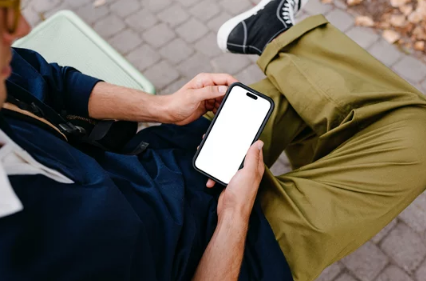Data sharing has become one of the most important features of modern smartphones. Whether it’s transferring photos to friends, sharing work documents, or moving contacts to a new device, users want fast, seamless, and reliable file transfer options. Among the two giants of the smartphone world—Apple’s iPhone and Samsung’s Galaxy series—the question often arises: Which one handles data sharing better?
In this article, we’ll compare how iPhone and Samsung devices perform when it comes to data sharing. From built-in features to third-party solutions, we’ll break down the pros, cons, and best use cases for each.
iPhone’s Approach to Data Sharing
Apple’s ecosystem is built around tight integration and simplicity—as long as you stay within its ecosystem. The main tools available for iPhone users include:
1. AirDrop
AirDrop is Apple’s crown jewel for data sharing. It allows instant wireless transfer between iPhones, iPads, and Macs.
- Pros:
- Extremely fast over Wi-Fi and Bluetooth.
- No internet required.
- Maintains original file quality.
- Cons:
- Only works with Apple devices (no compatibility with Samsung or other Android phones).
2. iCloud
iCloud allows users to sync files across devices and share them via links.
- Pros:
- Great for backups and access across Apple devices.
- Easy sharing via iCloud links.
- Cons:
- Limited free storage (5GB).
- Accessing files from non-Apple devices requires logging into iCloud.com.
3. iTunes/Finder
For wired transfers, iTunes (on Windows) or Finder (on Mac) lets users move data between iPhone and computers.
- Pros:
- Reliable for large transfers.
- Useful for full backups.
- Cons:
- Requires a computer and cable.
- Less convenient than wireless options.
Verdict on iPhone:
Apple offers some of the fastest and easiest data-sharing solutions—if you’re within the Apple ecosystem. However, once you try sharing with Samsung or other devices, limitations become clear.
Samsung’s Approach to Data Sharing
Samsung devices run on Android, giving users flexibility and multiple sharing methods. Samsung integrates both its own tools and broader Android ecosystem options.
1. Quick Share
Samsung’s Quick Share is similar to AirDrop, allowing fast transfers between Galaxy devices.
- Pros:
- Fast wireless transfers.
- Works with photos, videos, and files.
- Cons:
- Limited to Samsung devices (not universal for all Androids).
2. Nearby Share (Google)
Nearby Share, developed by Google, is available across most Android devices.
- Pros:
- Works on Samsung and other Androids.
- Wireless, no internet needed.
- Cons:
- Not compatible with iPhone.
3. Samsung Smart Switch
For moving data from another phone (including iPhone) to a Samsung device.
- Pros:
- Ideal for full device migration.
- Transfers contacts, apps, photos, messages, and more.
- Cons:
- One-way solution—only works to Samsung, not the other way around.
4. Google Drive and Other Cloud Services
Samsung integrates smoothly with Google Drive, OneDrive, and Dropbox, making cloud-based sharing convenient.
- Pros:
- Cross-platform compatibility.
- Works well with both iPhone and Android.
- Cons:
- Requires stable internet.
- Storage limits apply.
Verdict on Samsung:
Samsung offers flexibility and cross-platform compatibility, especially with cloud storage and Smart Switch. While Quick Share is limited like AirDrop, the availability of Nearby Share and third-party apps make Samsung devices more versatile for sharing with different platforms.
iPhone vs Samsung: Feature-by-Feature Comparison
| Feature | iPhone | Samsung |
|---|---|---|
| Fast Wireless Sharing | AirDrop (Apple-only) | Quick Share (Samsung-only), Nearby Share (Android-wide) |
| Cross-Platform Sharing | Limited (via iCloud or third-party apps) | Strong (Smart Switch, Google Drive, third-party apps) |
| Ease of Use | Extremely easy within Apple ecosystem | Flexible but requires choosing method |
| Backup & Sync | iCloud (5GB free, seamless for Apple) | Google Drive (15GB free), OneDrive options |
| Full Device Migration | iTunes/Finder + iCloud | Smart Switch (even from iPhone) |
Which Handles Data Sharing Better?
- If you live inside the Apple ecosystem: iPhone is unbeatable thanks to AirDrop’s speed and simplicity. Sharing between iPhones, Macs, and iPads is instant and seamless.
- If you switch devices often or need cross-platform flexibility: Samsung is the winner. With Smart Switch, Google Drive, and Nearby Share, it’s easier to move data between Samsung, iPhone, and other devices.
- For cloud sharing and backups: Samsung edges out with Google Drive’s larger free storage compared to iCloud.
Final Verdict
When it comes to data sharing within the same ecosystem, iPhone takes the lead thanks to AirDrop’s reliability. But if you’re looking for versatility, cross-platform compatibility, and more options, Samsung wins.
Ultimately, the “better” option depends on how you use your phone:
- Apple loyalists who use multiple Apple devices will enjoy the smoothest experience on iPhone.
- Users who mix devices or frequently switch brands will find Samsung’s flexible sharing tools more practical.
Also Read :
